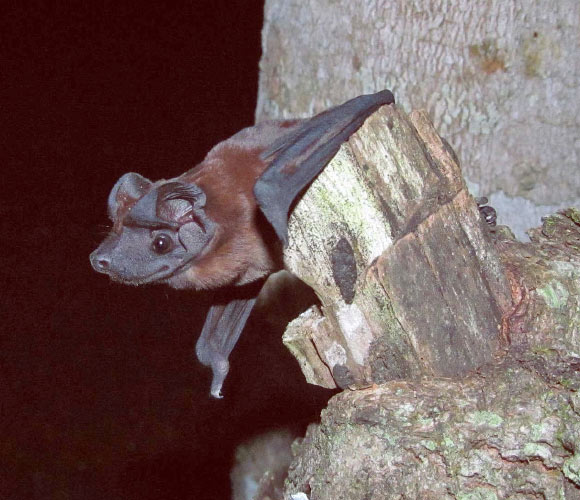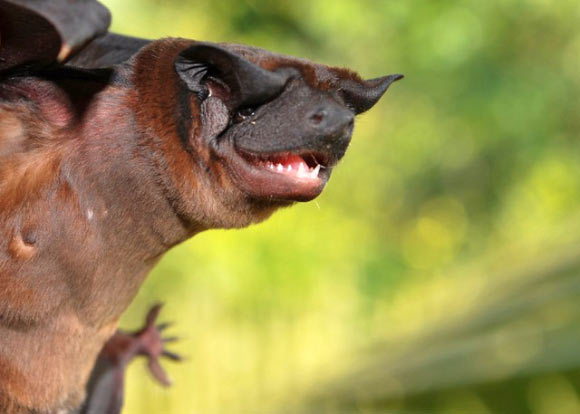Two new species of dog-faced bats have been discovered in the tropical forests of Central and South America. Both new species are described in the March 2018 issue of the journal Mammalian Biology.

The Freeman’s dog-faced bat (Cynomops freeman) in Soberania National Park near the Panama Canal. Image credit: Thomas Sattler.
For more than five decades, biologists believed that only six species of dog-faced bats existed. That number has now increased to eight with the discovery of two new species.
“Identifying two mammal species new to science is extremely exciting,” said study lead author Dr. Ligiane Moras, a researcher at the Universidade Federal de Minas Gerais, Brazil.
“After characterizing the body shapes of 242 dog-faced bats from museum collections across the Americas and Europe, comparing their DNA, and adding in field observations including sound recordings, we consider there to be eight species in this group, two of them new to science.”
These newly recognized species are the Freeman’s dog-faced bat (Cynomops freemani) from the Canal Zone region, Panama, and the Waorani dog-faced bat (Cynomops tonkigui) from the eastern Andes of Ecuador and Colombia.
“The discovery of two new species of Cynomops is tremendously exciting,” said Smithsonian Tropical Research Institute’s Dr. Rachel Page, who was not involved in the study.
“Molecular tools combined with meticulous morphological measurements are opening new doors to the diversity of this poorly understood group.”
“This discovery begs the question: What other new species are there, right under our very noses? What new diversity is yet to be uncovered?”
“I knew we had caught something exceptional, but all the bats of the Cynomops genus look very similar in the hand,” said co-author Thomas Sattler, one of the students in the field in Panama who was working on his post-doc at the University of Ulm as well as at Smithsonian Tropical Research Institute and is now at the Swiss Ornithological Institute.
“I had not realized we had caught a new species, now called Freeman’s dog-faced bat, until Ligiane came back with the DNA results.”
“We were very lucky to catch several different individuals of this species in mist nets and to record their calls,” he said.
“Having the call data may make it possible for us to find them again in the future and to learn more about this newly discovered bat species.”
_____
Ligiane M. Moras et al. 2018. Uncovering the diversity of dog-faced bats of the genus Cynomops (Chiroptera: Molossidae), with the redescription of C. milleri and the description of two new species. Mammalian Biology 89: 37-51; doi: 10.1016/j.mambio.2017.12.005








